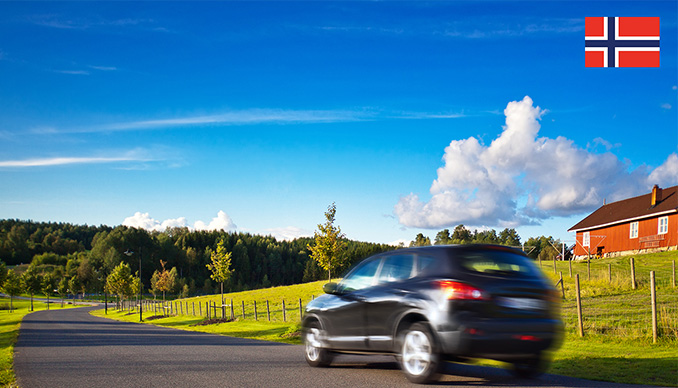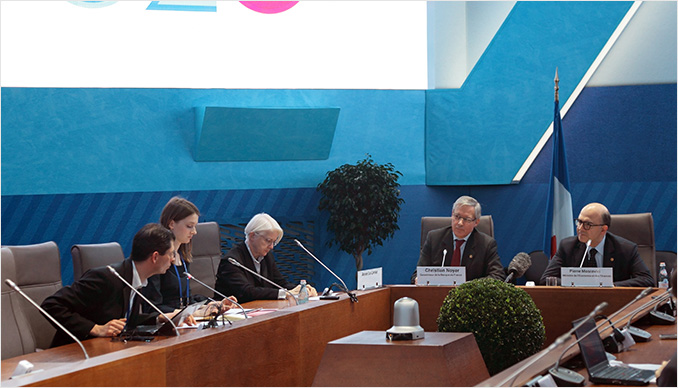
Electric vehicles are charged up with electricity like toy cars and are ready to drive. Does this still sound far-fetched in real life? Electric vehicles(EV) are no longer a thing of the future. Some of your colleagues at work are probably driving one already, and soon you will, too!


For a long time, vehicles have been powered by fossil fuels such as oil and natural gas. But fossil fuels have limited reserves, and are a major cause of pollution and global warming with their loud noises and smoky exhaust fumes as they burn fuel.
Electricity has emerged as a power source to replace fossil fuels and resolve these issues. In fact, EVs were invented before gas-powered vehicles, but they weren’t used due to lack of effectiveness, such as heavy batteries and their short distance compared to the long charging time. But EVs today feature amazing performance, overcoming all of these issues. They’re even cleaner and more silent than vehicles powered by fossil fuels.
While gasoline vehicles discharge 150g of carbon dioxide per km, EVs discharge none at all. More simply put, replacing one gas-powered vehicle with an EV will have the same effect as planting 350 pine trees a year.
The US EV survey agency Inside EVs selected Top 10 Countries in the Global EV Revolution in 2016. The scores were marked on the basis of 100 points, rating the growth rate of the EV market in each country, policy support, development speed, etc.

China took 1st place with 61 points amid fierce competition. China sold approximately 330,000 EVs in 2015 alone, and both sales and production increased by at least 300% year on year. The Chinese government is making bold efforts as well, selecting the EV business as one of the 7 major rising industries to focus on, and is offering grants based on the establishment of EV charging facilities.

Norway took 2nd place as the so-called ‘heaven of EVs,’ securing the largest number of EVs per capita. Norway has quick charging stations being offered free of charge, and EVs can also use highways and public parking lots for free. In June 2017, the market share of EVs surpassed that of pure internal combustion engine vehicles.

There’s also Ukraine, securing 5th place with explosive growth of 400% in EV sales year on year. Over 1,700 pure EVs and 800 hybrid EVs were sold in 2016 alone. Over 700 of them were also sold in the first quarter of 2017, exhibiting growing interest in reasonable EVs. The government is also highly enthusiastic about replacing taxis and police cars with EVs and establishing infrastructure such as charging stations.

Ranked No. 1 in the supply rate of eco-friendly vehicles, Japan currently has 1 out of 10 citizens driving eco-friendly vehicles. This shows how much people are becoming interested in EVs. Moreover, approximately 90% of the main components of EVs are ‘Made in Japan,’ which shows its dominant global power in businesses related to EV parts.

In the winter of 2015, leaders of 195 countries gathered in Paris to sign the Paris Agreement to gradually reduce greenhouse gas emissions so that the average global temperature does not increase by 2℃ or more. Accordingly, Europe will ban the sales of fossil fuel vehicles by 2025 at the earliest to 2040 at the latest, in order to achieve the EU 2050 Low Carbon Roadmap. As such, there is more and more global attention being paid to EVs, and this has become a reality that we must start thinking deeply about.
NEXEN TIRE is also keeping pace with these movements.
An EV has a heavy body and small noise, and thus requires specialized tires to reduce weight, rotation resistance and noise, and increase wear resistance and grip force. NEXEN TIRE released N'blue EV, exclusive tires for EVs, and is constantly studying to build a full lineup of EV tires. In addition, the company also released air purifying conceptual tire, BREATHRE, with its advanced technology. NEXEN TIRE will also continue to make further efforts for the tire industry to actively contribute to environmental problems.